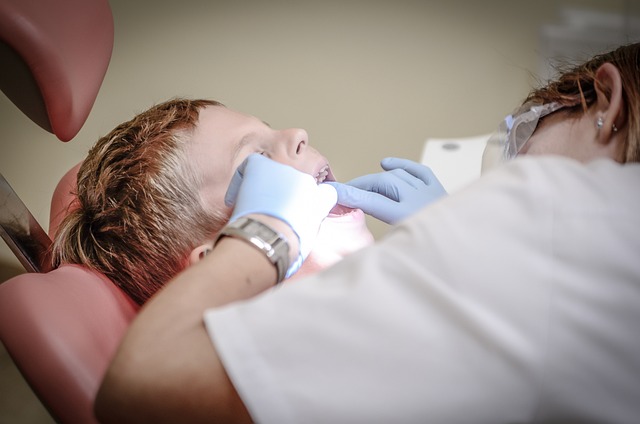Dry socket is a painful condition that can occur after a tooth extraction. It is a common complication that can affect anyone who has had a tooth removed, but it is more likely to occur in people who smoke, have poor oral hygiene, or have a history of dry socket. The condition can be very uncomfortable and can cause a lot of pain, which is why it is important to know the symptoms of dry socket.
The symptoms of dry socket can vary from person to person, but they typically include severe pain in the area where the tooth was removed, bad breath, and an unpleasant taste in the mouth. The pain can be so severe that it can radiate to the ear and the eye on the same side as the affected tooth. Other symptoms of dry socket may include swelling, fever, and an increased heart rate. If you experience any of these symptoms after a tooth extraction, it is important to seek medical attention as soon as possible.
Understanding Dry Socket
Dry Socket, also known as alveolar osteitis, is a painful condition that can occur after a tooth extraction. It happens when the blood clot that forms in the socket where the tooth was removed either dissolves or becomes dislodged before the healing process is complete. This leaves the bone and nerves in the empty socket exposed, causing severe pain and discomfort.
The symptoms of dry socket can vary in frequency and intensity. The most common symptoms include severe pain, bad breath, and a foul taste in the mouth. The pain may radiate to the ear or eye on the same side as the extraction, and it may be more intense when the patient tries to eat or drink. In some cases, the pain may also spread to the neck and shoulder.
There are several factors that can increase the risk of developing dry socket. These include smoking, poor oral hygiene, using birth control pills, having a difficult extraction, and having a history of dry socket. Women are also more likely to develop dry socket than men.
To prevent dry socket, patients should follow their dentist’s post-extraction instructions carefully. This may include avoiding smoking and using straws, rinsing the mouth gently with warm salt water, and taking pain medication as prescribed.
If a patient does develop dry socket, treatment may involve cleaning the socket to remove any debris and placing a medicated dressing in the socket to promote healing. Pain medication may also be prescribed to manage the patient’s discomfort.
In conclusion, understanding dry socket is essential for patients who have recently undergone a tooth extraction. By following their dentist’s post-extraction instructions and seeking prompt treatment if they develop symptoms of dry socket, patients can minimize their risk of experiencing this painful condition.
Symptoms of Dry Socket
Dry socket, also known as alveolar osteitis, is a painful condition that can occur after a tooth extraction. The symptoms of dry socket usually start a few days after the extraction and can last for several days. Here are some of the common symptoms of dry socket that one may experience:
- Pain: The most common symptom of dry socket is severe pain. The pain may start a few days after the extraction and can be felt in the jaw, ear, and neck area. The pain may be throbbing and can be intense.
- Bad breath: Another symptom of dry socket is bad breath. This is because the socket becomes a breeding ground for bacteria, which can cause an unpleasant odor.
- Unpleasant taste: A person with dry socket may also experience an unpleasant taste in their mouth. This is due to the presence of bacteria in the socket.
- Throbbing: The pain associated with dry socket may be throbbing in nature. This means that the pain may come and go in waves.
- Pus: In some cases, a person with dry socket may also notice pus in the socket. This is a sign of infection and requires immediate treatment.
It is important to note that not everyone who has a tooth extraction will develop dry socket. However, if a person experiences severe pain after a tooth extraction, they should contact their dentist immediately.
Risk Factors for Dry Socket
Dry socket is a common complication that occurs after tooth extraction, and certain risk factors can increase the likelihood of developing this condition. Understanding these risk factors can help individuals take preventive measures to reduce their chances of developing dry socket.
Several factors can increase the risk of dry socket, including smoking, poor oral hygiene, and drinking through a straw. Research has shown that smoking can significantly increase the risk of dry socket, as it impairs the healing process and reduces blood flow to the extraction site. Individuals who smoke are advised to quit smoking before and after tooth extraction to reduce their risk of developing dry socket.
Poor oral hygiene is another risk factor for dry socket. Failure to maintain proper oral hygiene can lead to the accumulation of bacteria in the mouth, which can increase the risk of infection and delay the healing process. Individuals are advised to practice good oral hygiene, including brushing and flossing regularly, to reduce their risk of developing dry socket.
Drinking through a straw and spitting can also increase the risk of dry socket. These actions create suction in the mouth, which can dislodge the blood clot that forms in the extraction site, leading to dry socket. Individuals are advised to avoid drinking through a straw and spitting for at least 24 hours after tooth extraction to reduce their risk of developing dry socket.
Other risk factors for dry socket include the use of oral contraceptives, estrogen therapy, and the extraction of wisdom teeth. Research has shown that these factors can increase the risk of dry socket, and individuals who have these risk factors should take extra precautions to prevent dry socket.
In summary, several risk factors can increase the likelihood of developing dry socket after tooth extraction. Individuals are advised to take preventive measures, such as quitting smoking, practicing good oral hygiene, and avoiding drinking through a straw and spitting, to reduce their risk of developing dry socket.
Complications Associated with Dry Socket
Dry socket is a common postoperative complication that can lead to various complications. Some of the complications associated with dry socket include:
- Infection: Infection is one of the most common complications associated with dry socket. When a blood clot fails to form or is dislodged from the socket, it leaves the socket exposed, making it vulnerable to bacterial infection. This can lead to an infection of the socket, which can cause pain, swelling, and fever.
- Delayed Healing: Dry socket can also lead to delayed healing of the socket. When the socket is not properly healed, it can lead to prolonged pain and discomfort.
- Bone Infection (Osteomyelitis): In severe cases, dry socket can lead to bone infection, also known as osteomyelitis. This occurs when the infection spreads to the bone, causing bone inflammation and pain.
It is important to note that not all cases of dry socket will lead to complications. However, if a patient experiences any of the above symptoms, they should seek immediate medical attention to prevent any further complications.
Diagnosis and Management of Dry Socket
Dry socket is a painful complication that occurs after tooth extraction. It is important to diagnose and manage dry socket to alleviate the discomfort and prevent further complications.
Diagnosis
Diagnosis of dry socket is primarily based on clinical symptoms, which include severe pain that radiates to the ear, bad breath, foul taste, and an empty socket. A dentist can diagnose dry socket by examining the surgical site and taking an X-ray to rule out other complications.
Management
The management of dry socket involves a combination of pain management and wound care. Pain management includes the use of analgesics such as ibuprofen or acetaminophen. Topical anesthetics can also be used to provide immediate pain relief.
Wound care involves cleaning the socket and promoting healing. The socket should be irrigated with saline solution to remove debris and food particles. The socket can also be packed with medicated dressings to promote healing and reduce pain.
Patients should also be advised to avoid smoking, drinking through a straw, and spitting, as these activities can dislodge the blood clot and delay healing.
Follow-up appointments are necessary to monitor the healing process and ensure that the socket is healing properly. If the pain persists or worsens, the dentist may need to perform additional treatments such as debridement or socket irrigation.
In summary, the diagnosis and management of dry socket require a combination of clinical examination, pain management, wound care, and follow-up appointments. With proper management, most patients can recover from dry socket without further complications.
Treatment Options for Dry Socket
When it comes to treating dry socket, there are several options available. The most common approach is to manage the pain and promote healing until the socket has fully healed.
Pain Management
One of the most important aspects of treating dry socket is managing the pain. This can be done with prescription pain medication or over-the-counter pain relievers, such as ibuprofen or acetaminophen. It is important to follow the instructions provided by the healthcare provider or pharmacist when taking these medications.
Medicated Dressings
Another common treatment option is the use of medicated dressings. These dressings are placed directly into the socket and contain a numbing agent and/or an antiseptic solution. They can help to reduce pain and promote healing.
Oral Antibiotics
In some cases, oral antibiotics may be prescribed to help prevent or treat infection. It is important to take the full course of antibiotics as prescribed, even if symptoms improve before the medication is finished.
Antiseptic Solutions
Antiseptic solutions, such as chlorhexidine, can be used to rinse the socket and help prevent infection. It is important to follow the instructions provided by the healthcare provider or pharmacist when using these solutions.
Other Medications
Other medications, such as corticosteroids, may be prescribed to help reduce inflammation and promote healing. It is important to follow the instructions provided by the healthcare provider when taking these medications.
Overall, the treatment approach for dry socket will depend on the severity of the symptoms and the individual’s overall health. It is important to follow the healthcare provider’s instructions and attend any follow-up appointments to ensure proper healing and prevent complications.
Preventive Measures for Dry Socket
Dry socket can be a painful and uncomfortable condition that can occur after a tooth extraction. Fortunately, there are several preventive measures that can be taken to reduce the risk of developing dry socket.
One of the most important preventive measures is to follow the post-operative instructions provided by the dentist or oral surgeon. These instructions may include avoiding smoking or using tobacco products for a certain period of time after the extraction, as well as avoiding certain foods or activities that may disrupt the healing process.
Good oral hygiene is also important in preventing dry socket. This includes brushing and flossing regularly, as well as using an antibacterial mouthwash to keep the mouth clean and free of bacteria.
Using gauze to control bleeding after the extraction can also help prevent dry socket. It is important to change the gauze regularly and to avoid touching the wound with the gauze or any other objects.
Some dentists may also place medicated dressings or other materials in the socket to help prevent dry socket. These materials may include antibiotics or other medications that can help promote healing and prevent infection.
In some cases, the dentist or oral surgeon may also prescribe pain medication or other medications to help manage pain and reduce the risk of developing dry socket.
Overall, taking preventive measures such as following post-operative instructions, maintaining good oral hygiene, and using medicated dressings or other materials as prescribed can help reduce the risk of developing dry socket after a tooth extraction.
Recovery and Healing Process
After a tooth extraction, it is normal to experience some discomfort and pain. However, if the pain worsens after a few days, it could be a sign of dry socket. Recovery and healing from dry socket can take some time and require proper care to prevent further complications.
The healing process for dry socket involves the formation of a blood clot in the socket, which acts as a protective layer for the underlying bone and nerves. This clot helps to promote healing by encouraging the growth of new tissue. However, if the clot becomes dislodged or dissolved, it can cause pain and delay the healing process.
To promote healing and recovery, patients are advised to follow a few guidelines. These include:
- Soft Foods: Eating soft foods can help prevent further irritation to the socket and promote healing.
- Ice: Applying a cold pack to the affected area can help reduce swelling and pain.
- Pain Relief: Over-the-counter pain relievers can help manage pain during the healing process.
- Avoiding Smoking: Smoking can slow down the healing process and increase the risk of developing dry socket.
It is important to note that recovery time can vary depending on the severity of the dry socket and the individual’s overall health. In some cases, it may take several weeks for the socket to fully heal.
If the symptoms of dry socket persist or worsen, it is important to seek medical attention. Your dentist or oral surgeon can provide additional treatment options to help promote healing and prevent further complications.















